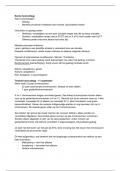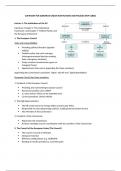Samenvatting
Summary lectures + all the articles of Healthcare Operations
- Instelling
- Rijksuniversiteit Groningen (RuG)
In this summary you will find a summary of the lectures inclusive all the articles that you need to know for the exam based on bulletpoints the university gives you.
[Meer zien]







